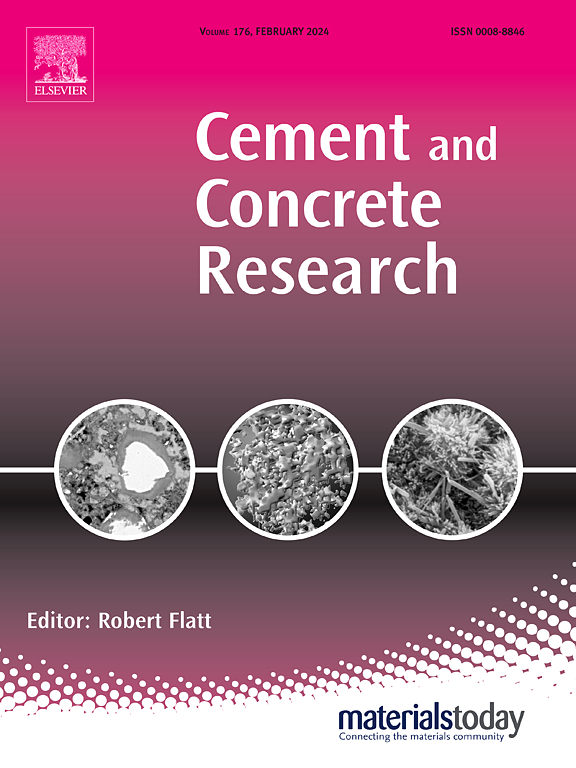Measuring mineralized carbon in carbonate minerals and cementitious materials by an acid digestion-titration method
IF 10.9
1区 工程技术
Q1 CONSTRUCTION & BUILDING TECHNOLOGY
引用次数: 0
Abstract
As carbon dioxide (CO2) sequestration technology begins to emerge in the construction and building materials sectors, industry stakeholders require quantifiable assurance mineralized CO2 content of emerging carbonated products. This study adapts a Digestion-Titration Method (DTM) for the determination of mineralized CO2 content in cementitious materials based on tests that were originally developed in the early 1900s. The experimental conditions were optimized with a systematic design of experiments (DOE) approach. The method utilizes hydrochloric acid to digest carbonate minerals (i.e., CaCO3, MgCO3) under vacuum conditions. The liberated CO2 from acid digestion is captured by a barium hydroxide solution to precipitate barium carbonate. Titration is used to quantify the remaining barium hydroxide, yielding a back-estimation of the total CO2 content. Mixtures of fixed compositions, portland cement, and a carbonated cementitious commercial product were employed to validate the proposed DTM method. DTM results were compared to thermogravimetric analysis (TGA) of the same samples. The outcomes of this work demonstrate that DTM can provide results consistent with TGA for samples containing a singular carbonate phase and yield more consistent quantification of mineralized CO2 for samples containing multiple phases.
用酸消化滴定法测定碳酸盐矿物和胶凝材料中的矿化碳
随着二氧化碳(CO2)封存技术开始在建筑和建材领域出现,行业利益相关者需要可量化的保证新兴碳酸化产品的矿化CO2含量。本研究采用消化滴定法(DTM)来测定胶凝材料中矿化CO2的含量,该方法最初是在20世纪初开发的。采用系统实验设计(DOE)方法对实验条件进行优化。该方法利用盐酸在真空条件下消化碳酸盐矿物(即CaCO3, MgCO3)。从酸消化中释放的二氧化碳被氢氧化钡溶液捕获以沉淀碳酸钡。滴定是用来量化剩余的氢氧化钡,产生总二氧化碳含量的反向估计。采用固定组合物、波特兰水泥和碳化胶凝商业产品的混合物来验证所提出的DTM方法。将DTM结果与相同样品的热重分析(TGA)结果进行比较。本工作的结果表明,DTM可以为含有单一碳酸盐相的样品提供与TGA一致的结果,并为含有多相的样品提供更一致的矿化CO2定量。
本文章由计算机程序翻译,如有差异,请以英文原文为准。
求助全文
约1分钟内获得全文
求助全文
来源期刊

Cement and Concrete Research
工程技术-材料科学:综合
CiteScore
20.90
自引率
12.30%
发文量
318
审稿时长
53 days
期刊介绍:
Cement and Concrete Research is dedicated to publishing top-notch research on the materials science and engineering of cement, cement composites, mortars, concrete, and related materials incorporating cement or other mineral binders. The journal prioritizes reporting significant findings in research on the properties and performance of cementitious materials. It also covers novel experimental techniques, the latest analytical and modeling methods, examination and diagnosis of actual cement and concrete structures, and the exploration of potential improvements in materials.
 求助内容:
求助内容: 应助结果提醒方式:
应助结果提醒方式:


